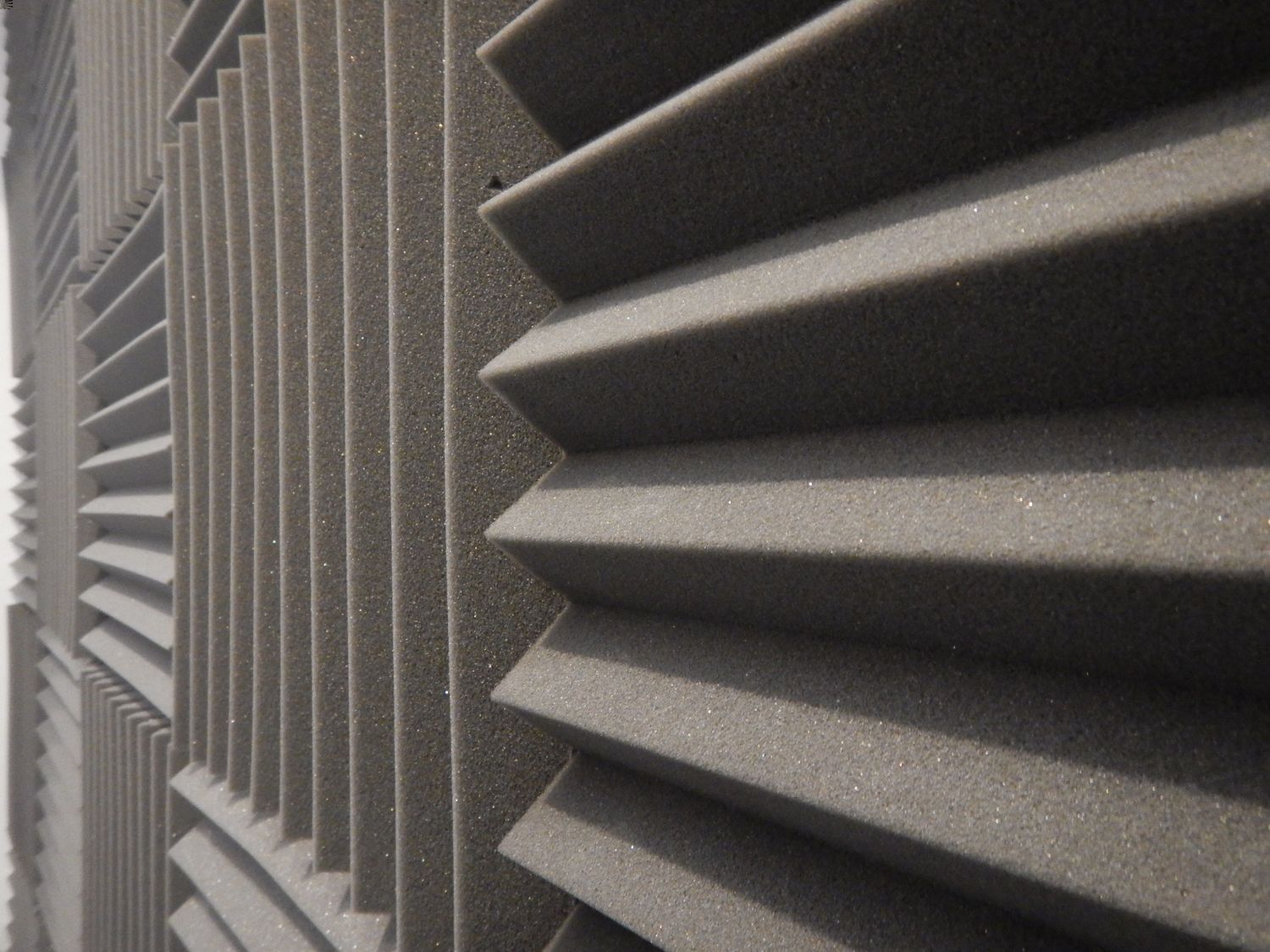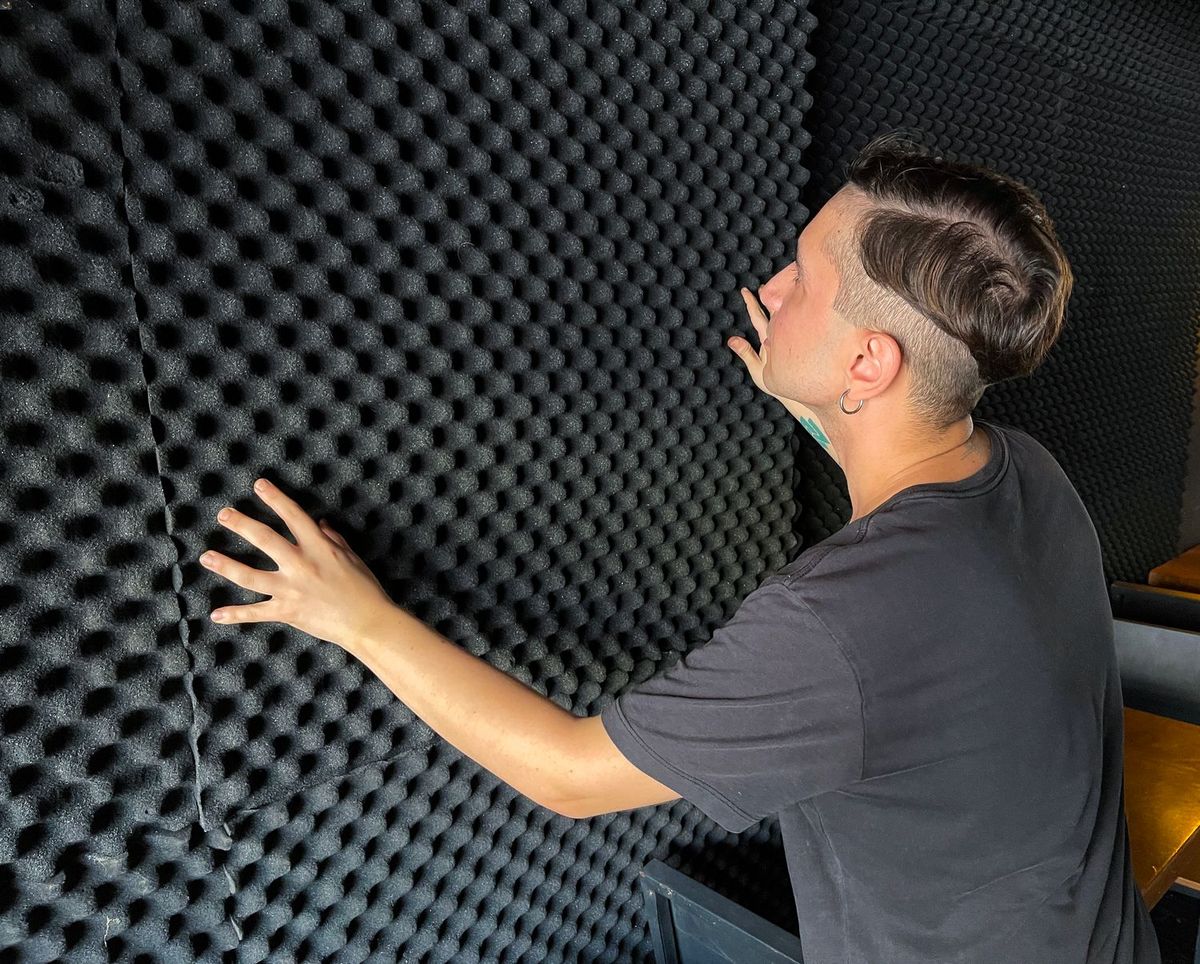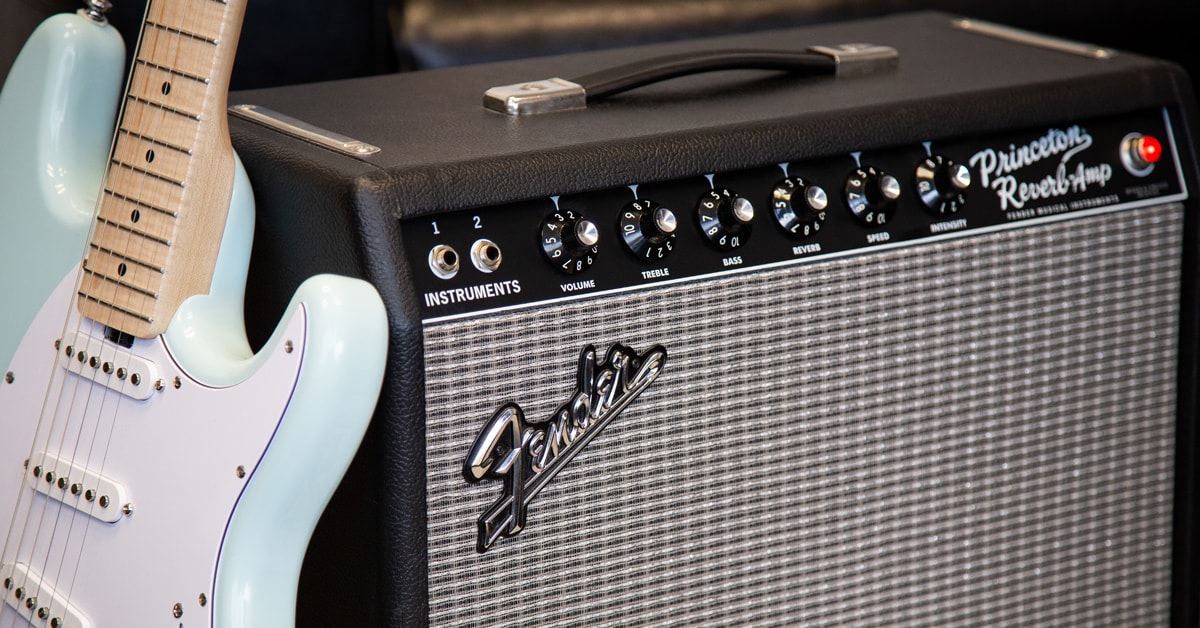Home>Production & Technology>Soundproofing>How Does Soundproofing Work?


Soundproofing
How Does Soundproofing Work?
Published: January 26, 2024
Learn how soundproofing works and discover effective methods to block out unwanted noise. Improve your living or workspace with soundproofing solutions.
(Many of the links in this article redirect to a specific reviewed product. Your purchase of these products through affiliate links helps to generate commission for AudioLover.com, at no extra cost. Learn more)
Table of Contents
Introduction
Soundproofing is the process of reducing or eliminating unwanted noise, creating a peaceful and quiet environment. Whether it’s in your home, office, or a public space, soundproofing is essential for maintaining privacy and enhancing comfort.
Unwanted noise can come from various sources, such as traffic, neighbors, machinery, or even loud music. It can be a major source of stress and disruption, affecting our ability to concentrate, relax, and sleep. That’s why soundproofing has become increasingly important in today’s fast-paced world.
But how does soundproofing actually work? In order to understand soundproofing techniques, it’s necessary to have a basic understanding of sound itself.
Sound is essentially a vibration that travels through a medium, such as air or water. When an object, such as a speaker or a musical instrument, produces sound waves, these waves travel through the air and reach our ears, enabling us to hear. However, when sound encounters an obstacle, it can be reflected, absorbed, or transmitted through that barrier.
Soundproofing aims to prevent or reduce the transmission of sound waves, so they don’t pass through walls, floors, or ceilings, causing unwanted noise in adjacent spaces. It involves the use of various techniques and materials that disrupt the sound waves, either by absorbing them, adding mass to block them, or by damping their energy.
In this article, we will explore the principles and techniques behind effective soundproofing. We will delve into the concepts of absorption, mass, damping, and decoupling, which form the foundation of soundproofing strategies. We will also discuss some common techniques used in soundproofing, such as the use of acoustic panels, as well as explore soundproofing applications in different industries, including construction, automotive, and home theaters.
By the end of this article, you will have a better understanding of how soundproofing works and be equipped with the knowledge to create a quieter and more peaceful environment.
Understanding Sound
Before diving into the details of soundproofing, it’s important to have a basic understanding of how sound works. Sound is produced by vibrations traveling through a medium, usually air, and reaching our ears, enabling us to perceive it as sound.
Sound waves are characterized by various properties including frequency, amplitude, and wavelength. Frequency refers to the number of complete cycles or vibrations per second and is measured in Hertz (Hz). The higher the frequency, the higher the pitch of the sound. Amplitude, on the other hand, refers to the intensity or loudness of the sound, with larger amplitudes producing louder sounds. Wavelength is the distance between two consecutive points of a wave and is inversely proportional to the frequency.
When sound waves travel through a medium, they can be reflected, transmitted, or absorbed. Reflection occurs when sound waves hit a surface and bounce back, causing echoes. Transmission happens when sound waves pass through a material, like air or a wall, into another space. Absorption, which is of particular interest in soundproofing, occurs when sound waves are absorbed by a material and their energy is dissipated as heat.
The ability of a material to absorb sound is called its sound absorption coefficient. Materials with high absorption coefficients, such as foam or fabric, are effective at reducing the reflection of sound waves and are commonly used in soundproofing applications.
It’s important to note that sound travels differently through different mediums. For example, sound travels faster through solids compared to liquids or gases. This property can be utilized in soundproofing to create barriers that prevent sound from passing through.
Understanding the properties and behavior of sound waves is crucial for implementing effective soundproofing strategies. By manipulating the transmission, reflection, and absorption of sound waves, we can minimize unwanted noise and create a more serene environment.
Principles of Soundproofing
To effectively soundproof a space, it’s important to understand the principles behind soundproofing. Soundproofing relies on four key principles: absorption, mass, damping, and decoupling. By utilizing these principles, we can minimize the transmission of sound waves and create a quieter environment.
Absorption
Sound absorption is the process of reducing the reflection of sound waves by converting their energy into heat. This is achieved by using materials that have a high sound absorption coefficient, such as acoustic foam, fiberglass panels, or fabric. These materials absorb sound waves, preventing them from bouncing off surfaces and reducing echoes. By incorporating sound-absorbing materials into a room, we can significantly reduce the overall sound level and improve acoustic quality.
Mass
The principle of mass in soundproofing involves adding density to surfaces to block the transmission of sound waves. Sound waves require a medium to travel through, and denser materials are more effective at blocking sound. For example, thick walls made of concrete or brick are more soundproof than thin walls made of drywall. By adding mass to walls, ceilings, and floors, we can reduce the amount of sound that passes through and minimize noise transmission.
Damping
Damping is the process of dissipating the energy of sound waves, reducing their intensity. This is commonly achieved by using damping materials, such as rubber or viscoelastic compounds, which absorb and attenuate sound vibrations. These materials convert sound energy into heat, effectively reducing the transmission of sound waves. Damping is particularly useful for reducing the impact of low-frequency sounds, which are harder to block with mass alone.
Decoupling
Decoupling involves isolating different building elements, such as walls, floors, and ceilings, to prevent sound vibrations from spreading. By creating separation between structures, sound waves have a harder time transferring from one area to another. This is commonly achieved by using resilient channels, soundproofing mats, or floating floors and ceilings. Decoupling helps to minimize sound transmission through physical vibrations and enhances the overall soundproofing effectiveness.
Combining these principles of soundproofing allows us to create a multi-layered approach that effectively reduces the transmission of sound waves. It’s important to consider these principles when planning and implementing soundproofing strategies in various applications, from residential and commercial spaces to automobiles and entertainment venues.
Absorption
Absorption is a fundamental principle in soundproofing that involves reducing the reflection of sound waves by converting their energy into heat. By incorporating sound-absorbing materials into a space, we can significantly improve its acoustic quality and reduce overall noise levels.
Sound absorption is especially important in rooms where echoes and reverberation can be an issue, such as music studios, theaters, or conference rooms. Excessive reverberation can make it difficult to understand speech, affect the quality of musical performances, and decrease overall comfort in a space.
There are various sound-absorbing materials available, each with specific characteristics and applications. Commonly used materials include:
- Acoustic Foam: Acoustic foam panels are made of specialized foam materials with open-cell structures. These foam panels are designed to absorb sound waves by dissipating their energy. Acoustic foam is lightweight and easy to install, making it a popular choice in home studios and entertainment rooms. They are particularly effective at absorbing high and mid-range frequencies.
- Fiberglass Panels: Fiberglass panels are made of densely packed fiberglass fibers and are effective at absorbing sound across a wide frequency range. These panels are typically covered with fabric to improve their aesthetic appearance. Fiberglass panels are commonly used in commercial applications, such as offices, auditoriums, and restaurants.
- Fabric Panels: Fabric-covered panels utilize a combination of absorptive materials, such as mineral wool or foam, covered with fabric. These panels provide both sound absorption and aesthetic appeal, as the fabric can be customized to match the room’s décor. Fabric panels are commonly used in residential spaces, including home theaters and recording studios.
- Bass Traps: Bass traps are specifically designed to absorb low-frequency sound waves, which are more challenging to control. These traps are usually placed in corners of a room where low-frequency energy tends to accumulate. Bass traps are often made of thicker absorbing materials, such as mineral wool or fiberglass, to effectively capture and attenuate low-frequency vibrations.
When using sound-absorbing materials, it’s important to strategically place them in the room to maximize their effectiveness. Placing panels on walls, ceilings, and even floors can help minimize sound reflections and reduce reverberation time.
Additionally, the thickness and density of sound-absorbing materials also play a significant role in their effectiveness. Thicker materials are better at absorbing lower frequencies, while denser materials provide better absorption across a wider frequency range.
Sound absorption can significantly improve the acoustic environment of a space, making it more comfortable and conducive to conversation, music, or other activities. By understanding the characteristics and applications of different sound-absorbing materials, you can choose the most suitable options for your specific soundproofing needs.
Mass
The principle of mass is an essential aspect of soundproofing, focusing on blocking the transmission of sound waves by adding density and weight to surfaces. By increasing the mass of walls, floors, and ceilings, we can effectively reduce the amount of sound that passes through and minimize noise transmission.
Sound waves require a medium to travel through, and denser materials offer greater resistance to sound transmission. When sound waves encounter a solid barrier, such as a heavy wall, the energy of the waves is absorbed or reflected back, resulting in reduced noise transfer to adjacent spaces.
Traditional construction materials like concrete, brick, and stone are naturally dense and provide a substantial barrier to sound transmission. These materials can effectively block a wide range of frequencies and are commonly used in soundproofing applications, such as recording studios, cinemas, and offices.
For existing structures, adding mass to walls can be achieved by attaching additional layers of dense materials like mass-loaded vinyl, drywall, or even lead sheets. Mass-loaded vinyl is a popular choice as it is a flexible, easy-to-install material with high mass that can block sound effectively.
The effectiveness of mass in soundproofing is determined by the thickness and density of the added material. Thicker and denser materials provide better sound insulation and are particularly effective at blocking low-frequency sounds. However, it’s important to note that the quality of the construction also plays a role in the overall soundproofing performance. Proper installation, sealing gaps, and avoiding structural weak points are crucial to maximize the mass’s impact on soundproofing.
In addition to walls, floors, and ceilings, doors and windows are common points of sound leakage. To enhance their soundproofing, specialized doors and windows that feature increased mass and sound-isolating properties can be installed. These products incorporate multiple layers of glass or specialized materials to effectively block sound transmission.
It’s worth noting that while adding mass is an effective strategy in soundproofing, it may not completely eliminate all noise. Sound can still find alternative paths of transmission, such as vibrating through structural elements, pipes, or ventilation systems. Combining mass with other soundproofing techniques like absorption and damping can help achieve optimal sound insulation.
By utilizing the principle of mass in soundproofing, we can create barriers that effectively block sound transmission and create a quieter, more peaceful environment.
Damping
Damping is a crucial principle in soundproofing that involves reducing the intensity of sound waves by dissipating their energy. It is particularly effective in reducing the impact of low-frequency sounds, which are more challenging to block with mass alone.
When sound waves encounter a surface, they can cause the surface to vibrate, creating a secondary source of sound that can transmit through the structure. Damping materials are specifically designed to absorb these vibrations and convert the sound energy into heat, reducing their intensity and preventing them from propagating further.
There are various types of damping materials used in soundproofing applications, including rubber, viscoelastic compounds, and specialized insulation products. These materials possess unique properties that allow them to effectively absorb and attenuate sound vibrations.
Rubber-based damping materials, such as neoprene or rubber pads, are commonly used to dampen vibrations in structures. When placed between vibrating surfaces, these rubber materials absorb the energy of the vibrations, reducing the sound transmission. They are often used in automotive applications to reduce road and engine noise.
Viscoelastic compounds, such as soundproofing mats or sheets made of butyl rubber or asphalt, have excellent damping properties. These materials are flexible and can be applied to various surfaces, such as walls, floors, or ceilings. When sound waves encounter these materials, the viscoelastic nature of the compounds converts the vibrations into heat, effectively reducing sound transmission.
Specialized insulation products, like mass-loaded vinyl with a damping layer, combine the principles of both mass and damping to enhance soundproofing performance. These products, often referred to as MLV with a viscoelastic layer, offer both mass and damping properties in a single material, providing improved sound insulation.
Damping materials can be particularly effective in reducing the impact of low-frequency sounds, which are harder to block with mass alone. Low-frequency vibrations can travel through structures, pipes, and ventilation systems. By damping these vibrations, we can reduce their intensity and minimize the transmission of low-frequency noise.
In addition to using specific damping materials, achieving optimal damping also depends on proper installation techniques. Ensuring that the damping material is tightly adhered to surfaces and covering as much area as possible will maximize its effectiveness.
Damping is a valuable technique in soundproofing as it helps mitigate the transmission of sound vibrations through structures. By incorporating damping materials into soundproofing strategies, we can significantly reduce noise transmission and create a more peaceful and quiet environment.
Decoupling
Decoupling is a key principle in soundproofing that involves isolating different building elements to prevent the transfer of sound vibrations. By creating separation between structures, we can minimize the transmission of sound waves through physical vibrations and enhance the overall effectiveness of soundproofing.
When sound waves encounter a surface, they can travel through the structure and cause it to vibrate. This vibration can then transfer the sound energy to adjacent areas, resulting in unwanted noise transmission. Decoupling breaks this transmission path by introducing a barrier that minimizes the direct contact between surfaces.
There are several methods and materials used to achieve decoupling. Some common techniques include:
- Resilient Channels: Resilient channels are metal strips or bars that are used to attach drywall to walls, ceilings, or floors. These channels create a gap between the drywall and the underlying surface, allowing for limited contact and reducing sound transmission.
- Soundproofing Mats or Cushions: Soundproofing mats or cushions, made from materials like rubber or foam, are placed between surfaces to reduce direct contact and vibrations. These mats absorb and isolate vibrations, preventing sound waves from traveling through the structure.
- Floating Floors and Ceilings: Floating floors and ceilings involve the use of resilient materials or specialized systems that create a separation between the structural elements and the finished surface. These systems minimize the transfer of vibrations and sound waves, resulting in improved soundproofing.
Decoupling is particularly effective in controlling impact noise, which is generated by physical contact or vibrations. Examples of impact noise include footsteps on a floor or the closing of a door. By decoupling the structure, we can prevent these vibrations from traveling through the building, reducing the impact noise in adjacent spaces.
Decoupling is commonly employed in various applications, such as residential and commercial buildings, recording studios, and home theaters. It helps create a more acoustically isolated environment by breaking the path of sound transmission and significantly reducing unwanted noise.
When implementing decoupling techniques, it is crucial to ensure proper installation and the use of appropriate materials. Following manufacturer guidelines and considering structural integrity will enhance the effectiveness of decoupling methods.
By incorporating the principle of decoupling into soundproofing strategies, we can minimize the transmission of sound vibrations and create spaces that are more peaceful and isolated from external noise sources.
Common Soundproofing Techniques
Soundproofing techniques vary depending on the specific needs and requirements of a space. Whether you are soundproofing a room in your home, an office, or a commercial venue, there are several commonly used techniques that can effectively reduce noise transmission. Here are some of the most popular methods:
1. Insulation:
Proper insulation of walls, floors, and ceilings can significantly reduce the transmission of sound. Insulation materials, such as mineral wool or fiberglass batts, act as a barrier, absorbing and dissipating sound waves. Adding insulation in between wall studs and in ceiling or floor cavities can greatly enhance soundproofing.
2. Sealing and Caulking:
Sealing gaps, cracks, and air leaks in walls, windows, doors, and other openings is an important step in soundproofing. By using weatherstripping, caulk, or acoustic sealants, you can prevent sound leakage and enhance the overall soundproofing performance of a space.
3. Double Glazing:
Windows are often a weak point when it comes to sound transmission. Installing double glazing, which involves using two layers of glass separated by an air or gas-filled space, can significantly reduce noise infiltration. Double-glazed windows create an additional barrier against sound waves, effectively improving sound insulation.
4. Soundproof Curtains or Drapes:
Soundproof curtains or drapes are specially designed to absorb and block sound waves from entering or exiting a room. These curtains are made with dense materials and sometimes have an additional sound-absorbing layer. They can be effective in reducing outside noise and improving the acoustics of a room.
5. Acoustic Panels:
Acoustic panels are widely used in soundproofing applications, particularly in studios, theaters, and offices. These panels are made of sound-absorbing materials, such as foam or fiberglass, and are designed to reduce echoes and reverberation. Acoustic panels are available in various sizes and shapes, making them versatile for different installation needs.
6. Mass-Loaded Vinyl (MLV):
Mass-loaded vinyl is a dense and flexible material that can be used to add mass to walls, floors, and ceilings. It effectively blocks sound transmission and is often used as an additional layer of soundproofing material. MLV can be installed directly on surfaces or sandwiched between layers of other materials.
7. Soundproofing Underlayments:
If you’re concerned about noise from footsteps or impact noises, soundproofing underlayments can help. These underlayments are designed to dampen vibrations and reduce transmitted sound. They are commonly used under flooring materials, such as carpets, hardwood, or laminate.
When implementing soundproofing techniques, it’s important to consider the specific noise sources, the characteristics of the space, and the desired level of soundproofing. Combining multiple techniques or customizing solutions depending on the needs of your particular environment can yield the best results.
Use of Acoustic Panels
Acoustic panels are a popular and effective soundproofing solution used in various applications, ranging from home theaters and recording studios to offices and restaurants. These panels are designed to absorb sound waves, reducing echoes, reverberation, and overall noise levels in a room.
Acoustic panels are typically made of sound-absorbing materials, such as foam or fiberglass, that have a high sound absorption coefficient. This means that they can effectively convert sound energy into heat, minimizing sound reflections and improving the acoustic quality of a space.
Here are some key benefits and uses of acoustic panels:
1. Echo Reduction and Sound Control:
One of the primary purposes of acoustic panels is to minimize echoes and reverberation in a room. When sound waves bounce off hard surfaces like walls, floors, and ceilings, they create reflections that can distort speech, music, or other sounds. Acoustic panels absorb these reflected waves, reducing their impact and creating a more balanced and natural acoustic environment, ideal for recording studios, home theaters, or conference rooms.
2. Noise Reduction:
Acoustic panels effectively reduce noise levels by absorbing sound waves. This can be helpful in environments where external noise is a concern, such as offices located in busy areas or residential spaces near highways or airports. By installing acoustic panels on walls or ceilings, you can minimize noise infiltration and create a more peaceful and productive environment.
3. Aesthetic Appeal:
Acoustic panels are available in a variety of shapes, sizes, and colors, allowing for customization and integration into existing interior designs. They can be used as decorative elements, adding both functionality and visual appeal to a space. Whether you choose a classic panel design or opt for a more creative arrangement, acoustic panels can enhance the overall aesthetics of a room.
4. Versatile Installation Options:
Acoustic panels are easy to install and can be mounted on walls, ceilings, or even freestanding frames. They can be arranged in various configurations to achieve the desired sound control and aesthetic effect. Some panels have adhesive backing for simple installation, while others require specialized mounting brackets or frames.
5. Portable and Temporary Solutions:
Acoustic panels are available in both permanent and temporary forms. Temporary acoustic panels, such as freestanding screens or portable partitions, offer flexibility and can be moved or repositioned as needed. This makes them ideal for event spaces, trade shows, or offices where flexibility is required.
When using acoustic panels, it’s essential to consider the specific soundproofing requirements of your space. Factors such as room size, shape, and the intended use of the space will help determine the number, size, and placement of the panels for optimal sound control.
Overall, acoustic panels provide an effective and versatile solution for controlling sound in various settings. Whether you are aiming to improve the acoustics of a room, reduce noise levels, or enhance the aesthetics, acoustic panels can significantly contribute to creating a more pleasant and functional environment.
Soundproofing in Construction
Soundproofing plays a crucial role in the construction industry, as it is essential for creating spaces that are acoustically comfortable, functional, and meet noise regulations. Incorporating soundproofing techniques during the construction phase ensures that buildings and structures are designed to minimize noise transmission and provide a quiet environment for occupants.
Here are some key aspects of soundproofing in construction:
1. Building Design:
Soundproofing starts with the design of the building itself. Architects and designers need to consider the specific noise requirements of the space and select appropriate materials and construction techniques. Factors such as room layout, thickness and composition of walls, type of floor and ceiling structures, and the placement of windows and doors can all influence the soundproofing performance of a building.
2. Insulation and Isolation:
Insulation is a crucial element in soundproofing construction. Properly insulating walls, floors, and ceilings helps control sound transmission between rooms and to the outside environment. Acoustic insulation materials, such as mineral wool or fiberglass batts, can be installed in wall cavities, between floors, or within ceiling assemblies to reduce sound transfer through the structure.
In addition to insulation, incorporating isolation techniques is essential for soundproofing. Isolation involves creating separation between structural elements to prevent sound vibrations from traveling. This can be achieved through the use of resilient channels, soundproofing mats, or floating floors and ceilings, which help reduce the transfer of vibrations and impact noise.
3. Window and Door Design:
Windows and doors are often areas of significant sound leakage in buildings. Proper design and selection of windows and doors can significantly improve soundproofing. Double or triple glazing, laminated glass, and specialized seals and frames can help minimize noise transmission through windows. Solid-core doors with seals can also provide better sound insulation compared to hollow-core doors.
4. HVAC and Mechanical Systems:
Heating, ventilation, and air conditioning (HVAC) systems, as well as other mechanical systems, can contribute to noise in a building. Careful design and installation of these systems are important to keep noise levels to a minimum. This may involve using noise-reducing components, such as vibration isolators and properly designed ductwork, as well as locating noisy equipment away from sensitive areas.
5. Acoustic Treatment:
After the construction phase, additional acoustic treatments can be applied to further enhance soundproofing in specific areas. This may include the installation of acoustic panels or fabrics on walls and ceilings to absorb sound reflections and reduce reverberation.
By integrating soundproofing techniques into the construction process, it is possible to create buildings that provide optimal noise control and a comfortable acoustic environment. This is crucial for a range of settings, including residential buildings, offices, educational facilities, healthcare settings, and entertainment venues, ensuring that occupants can enjoy the benefits of a quiet and peaceful space.
Soundproofing in the Automotive Industry
Soundproofing plays a vital role in the automotive industry, contributing to the comfort and overall experience of drivers and passengers. It involves implementing various techniques to reduce external noise, vibrations, and harshness (NVH), as well as improving the acoustic quality inside the vehicle cabin.
1. Insulation and Damping:
Automobile manufacturers use insulation materials, such as foam liners and barrier mats, throughout the vehicle to reduce noise transmission. These materials are strategically placed in areas prone to noise penetration, such as door panels, floorboards, and engine compartments. In addition, damping materials like butyl rubber or asphalt pads are applied to surfaces to control vibrations and reduce sound transmission.
2. Window, Door, and Roof Design:
Special attention is given to the design of windows, doors, and roofs to minimize external noise. Manufacturers use laminated glass and rubber seals to create a better sound barrier for windows. Similarly, sealing techniques and the use of insulating materials in doors and roof panels help prevent noise infiltration into the cabin.
3. Engine and Exhaust Systems:
Engine noise and exhaust sounds are key contributors to in-cabin noise. Automakers employ engineering techniques, such as improved engine mounts, acoustic shields, and specially designed exhaust systems, to reduce vibrations and sound from reaching the cabin. This results in a quieter experience for passengers, especially during acceleration or idling.
4. Aerodynamics:
Aerodynamic design can significantly impact the noise levels inside a vehicle. Manufacturers focus on reducing external wind noise by optimizing the shape and contours of the vehicle, minimizing turbulence, and improving the fit of panels and seals. By minimizing air turbulence and wind noise, the overall noise level inside the cabin is reduced.
5. Sound-Deadening Materials:
Automotive soundproofing often involves the use of sound-deadening materials. These materials, such as mass-loaded vinyl (MLV) or composite layers with sound-absorbing properties, are applied to various surfaces to block and absorb sound waves. They are commonly used in the firewall, wheel arches, and floorpans to reduce road and tire noise from entering the cabin.
6. Active Noise Cancellation:
Some advanced car models utilize active noise cancellation technology to further improve the acoustic experience inside the cabin. This technology uses microphones and speakers to detect and emit sound waves that cancel out unwanted frequencies, reducing noise and creating a quieter environment.
Soundproofing in the automotive industry aims to create a comfortable and enjoyable driving experience by minimizing external noise and vibrations. By employing a combination of insulation, damping, aerodynamics, and advanced technologies, automakers achieve a significant reduction in NVH, providing drivers and passengers with a quieter and more peaceful ride.
Soundproofing in Home Theaters
Soundproofing is of utmost importance in home theaters to ensure an immersive and high-quality audiovisual experience. Designing and implementing soundproofing techniques in a dedicated home theater space can effectively control sound transmission and minimize external noise interference.
1. Room Isolation:
Creating a dedicated and isolated space for your home theater is the first step in ensuring optimal soundproofing. Ideally, the home theater should be located in an area away from high-traffic zones, such as bedrooms or living rooms, to minimize noise transfer from other parts of the house. Constructing room walls, ceilings, and floors with soundproof materials, such as insulated drywall or mass-loaded vinyl, can help isolate the space and prevent sound leakage.
2. Acoustic Treatment:
Acoustic treatment involves the use of sound-absorbing materials to control echoes, reverberations, and sound reflections within the home theater room. Acoustic panels, bass traps, and diffusers can be strategically placed on walls, ceilings, and corners to absorb and distribute sound waves, improving the overall audio experience and preventing excessive sound buildup.
3. Soundproofing Doors and Windows:
Doors and windows are common paths for sound leakage. Installing soundproof doors with solid cores and weatherstripping, as well as double or triple-glazed soundproof windows, can effectively reduce outside noise and keep sound within the home theater space. This prevents sound from entering or escaping, enhancing the immersive experience and minimizing disturbances to surrounding areas.
4. Flooring Considerations:
Flooring materials can impact the acoustics of a home theater. Choosing carpeting or adding carpet underlay can help dampen sound and reduce footstep noise within the theater. Additionally, floating floors with built-in soundproofing layers can further minimize impact noise and vibrations.
5. HVAC Noise Control:
Heating, ventilation, and air conditioning (HVAC) systems can introduce unwanted noise into the home theater. Proper HVAC placement, ductwork insulation, and the use of sound-isolating duct materials can help minimize HVAC noise intrusion, ensuring a quiet and undisturbed viewing experience.
6. Sealing and Insulation:
Sealing gaps, cracks, and electrical outlets in the walls and ceilings is crucial to prevent sound leakage. Proper insulation of walls, floors, and ceilings using high-density materials or specialized sound insulation can further enhance soundproofing capabilities and improve the overall performance of the home theater.
Implementing these soundproofing techniques in your home theater will not only optimize the audio experience but also ensure a peaceful and enjoyable environment. By controlling sound transmission, reducing external noise, and creating a properly balanced acoustic space, you can truly immerse yourself in the movie-watching experience, creating a true “cinema at home” atmosphere.
Conclusion
Soundproofing is a critical aspect of creating comfortable and functional spaces in various environments, ranging from homes and offices to automotive vehicles and entertainment venues. Understanding the principles and techniques of soundproofing allows us to effectively control noise, reduce sound transmission, and improve the overall acoustic quality of a space.
By incorporating soundproofing techniques such as absorption, mass, damping, and decoupling, we can create barriers that block, absorb, and dissipate sound waves, creating quieter and more peaceful environments. Whether it’s using acoustic panels to control echoes in home theaters, adding mass and insulation to walls in construction projects, or implementing insulation and damping materials in automotive vehicles, soundproofing solutions provide tangible benefits in terms of noise reduction and improved acoustics.
Effective soundproofing not only enhances our quality of life but also improves productivity, concentration, and relaxation. It allows us to enjoy clear audio, maintain privacy, and minimize disturbances from external noise sources. Whether it’s creating a serene bedroom, a productive office space, or an acoustically optimized recording studio, soundproofing techniques are essential in achieving the desired environment.
Choosing the right soundproofing materials and techniques for a particular space depends on factors such as the nature of the noise, the desired level of sound insulation, and the specific requirements of the application. It’s important to consider a combination of techniques, such as insulation, damping, and decoupling, to achieve optimal sound control. Furthermore, incorporating aesthetic considerations into soundproofing solutions can enhance the overall ambiance and visual appeal of a space.
In conclusion, soundproofing is a multidimensional and dynamic field, encompassing a range of materials, techniques, and applications. Widespread knowledge and implementation of soundproofing principles can lead to quieter, more comfortable, and aesthetically pleasing environments that enhance our well-being and enjoyment of our surroundings.











